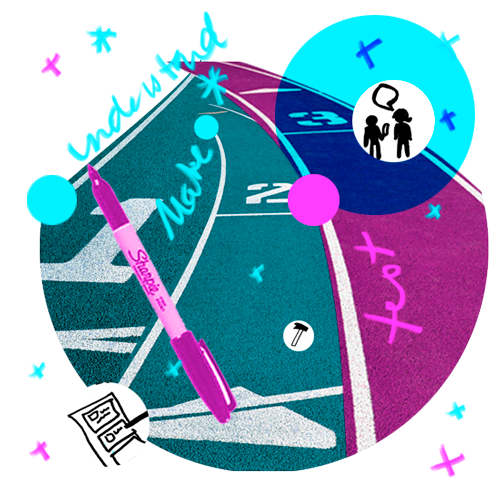What are Design Sprints?
This three-part post series covers what ‘design sprints’ are, what they are good for and how to use them.
Once an approach gets ‘buzzword’ status the pressure is on to apply it in every new project but its important to apply it to the right project at the right time.
Design Sprints are a great process they are fun, bring people together and get quick visible results, but the trick to success is how it’s used and managed. Without the right team, approach and expectations it can become a fast path to bad practices — poor insight, bad design and misleading outcomes.
Design Sprint Series: Part 1
Where have they come from?
It’s a process made popular as a Design Sprint by Google Ventures, built from the ‘Design Thinking’ approach by IDEO and the D-school of design at Stanford. Jake Knapp is the man you’ll see cited everywhere, there are countless books, apps and courses.
What is it actually?
Design Sprint is a framework to get new ideas, using multidisciplinary teams to test and create quickly. It simplifies design processes and enables collaboration from the outset to get rough ideas in front of users in a lean fast way. Generally, it is seen as a 5 step process that goes from insight and design to testing in a short time frame — say a week.
What these stages are exactly can vary depending on what you read, but as always it is best practice to adapt any process you use to meet your needs and situation.
How is it different from any Agile Sprint process?
It’s about taking existing sprint techniques and appropriating them for more strategic design challenges. Agile sprints are generally focused on delivery, tied closely to development and they tend to be detailed and incremental.
This level of detail can be a suffocating barrier if you want to look at the bigger picture. Here enter ‘Design Sprint’ — a way of bringing the greatest hits of lean sprint minus the detailed requirements of delivery. Giving more air to strategic proposition development away from the realities of delivery.
What do they do?
Design sprints start from insight, for example taking observed behaviours from a market or customers as a brief to find new opportunities they are best used in two ways;
Propositional Design Sprints
High-level new ideas for example the ‘venture’ market. Its all about finding new business opportunities, building a startup idea or quickly validating a next-phase business ‘vision’ or proposition.Product or service Design Sprints
This is all about looking for new opportunities within an existing product or service. Think of these more as feature sprints. Great for fast validation, iteration and product problem-solving.
Design sprint is not about testing minutia (a button or heading), it’s about solving a problem or opportunity and seeing if your new ‘amazing’ idea has actual legs, with real people, fast!
